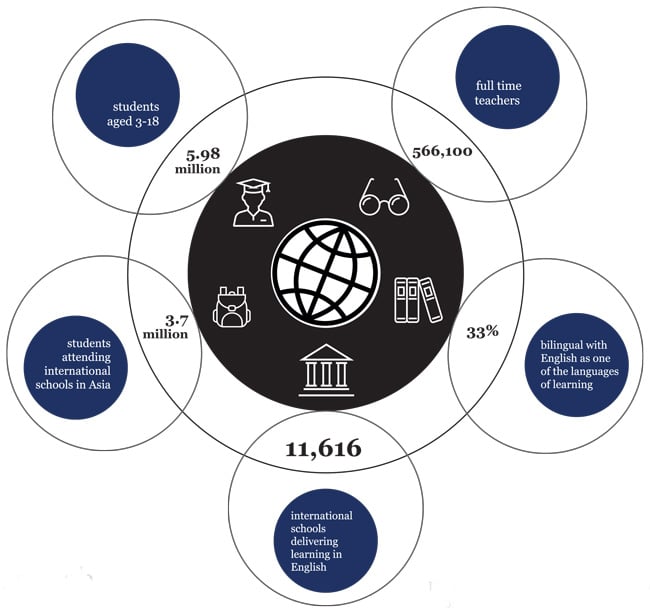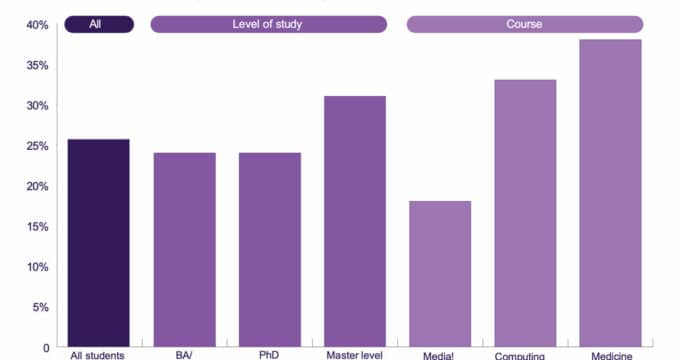Continued growth for international K-12 schools with greater emphasis on mid-market segment
- A new global study finds continued strong growth in the international schools sector, with South Asia emerging as an important driver of enrolment trends over the last five years
- The outlook is for continued strong performance in the sector going forward, with demand increasing among families for more affordable, mid-market schools
The newly published 2020 Global Opportunities Report from ISC Research highlights a number of important trends in the international K-12 school sector.
First, the steady growth observed over the past number of years is continuing. As of July this year, there were 11,616 international schools globally with a combined enrolment of 5,984,000 students aged 3 to 18 years-old. Just over six in ten of those students (62%) were enrolled in international schools in Asia.
All of these schools deliver an international curriculum in English, or partly in English. One of the notable findings this year is that 33% of international schools are bilingual, offering English as one of the main languages of learning. "Most of these schools are located in countries where English is not one of the official languages but where demand for an international education in English is high," notes ISC.

The scale of the sector as of July 2020 represents a roughly 20% increase in the number of schools worldwide from 2018, and a 17% jump in enrolment. Looking behind those top-line numbers, it is clear that Asia and the Middle East are driving much of that growth. Enrolment in international schools in the Middle East has grown by more than 20% since 2015 to reach 1.7 million this year. The numbers have also jumped in Southeast Asia – up 31.5% from 2015 to 563,500 – and in East Asia (+33.3% to 627,200). The most notable growth, however, has been in South Asia where enrolment has grown by nearly two-thirds since 2015 (64.6%) to a total of 763,900.
Increase in demand for mid-market
ISC Research classifies the market into three school segments – premium, mid-market, or low-market schools – with the categorisation based entirely on the level of annual tuition fees at each school.
The classification, however, is not correlated to school quality. "A premium school may charge higher fees because it employs more foreign teachers, or because it occupies a prime location in an expensive city," explains ISC. "A mid-market school may be able to charge mid-range fees because it has very favourable lease terms on its premises and is run on a not-for-profit basis."
To expand on that point, the report notes as well that fees vary considerably from market to market and by school type. Average annual tuition fees in Malaysia, for example, are US$6,318, US$16,340 in China, and US$3,195 in India.
With those important qualifications in mind, ISC has also observed a shift in market demand toward the mid-market segment and greater weight given to affordability among families choosing international schools. ISC attributes this partly to more local families seeking out English-medium education at international schools, but also to growing numbers of expatriate families funding their children's education themselves (rather than by their employers) – with both of those underlying factors expected to drive continuing growth in the years ahead.
“As families seek more affordable education options, and as schools feel the pressures of operating in an increasingly competitive market, growth will be driven by schools’ capacity to provide quality, affordable education using multiple learning options and platforms,” adds the Global Opportunities report. “This introduces a much larger population to international education, not only increasing overall demand, but also acting to ensure quality provision and a diverse student population.”
For additional background, please see:
















